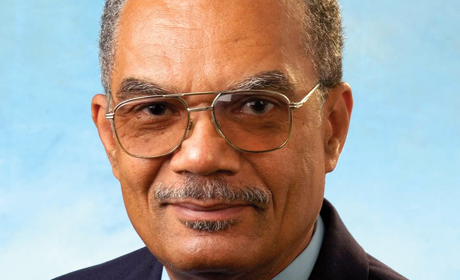“All things were made through him, and without him was not any thing made that was made.”
– John 1:3
March 22, 2022 – I remember the days of the piggy bank and the savings account which were secure repositories for the precious pennies gained from our pocket money, birthday and Christmas gifts and earnings from odd jobs.
I am also reminded of the chorus of the 1967 calypso hit “Education” by Mighty Sparrow, the lyrical master: “Children, go to school and learn well, otherwise later on in life you will catch real hell; Without an education in your head, your whole life will be pure misery, you’re better off dead; For there is simply no room in this whole wide world, for an uneducated little boy or girl; Don’t allow idle companions to lead you astray, to earn tomorrow you have to learn today.”
These two memories inculcated a discipline of saving and investment when we entered the job market, which would later contribute to our own wealth and hence to the growth of our economies.
Investment instruments include real estate, entrepreneurship, stocks, bonds, mutual funds, bank products, pensions, insurance and futures.
Now, fast forward to the information and computer technology (ICT) age. The need for a safe repository for savings and investment funds is the same but the language now embraces the new additional digital economy and the currency is the new digital cryptocurrency.
The business opportunities to fuel economic growth have not changed, namely agriculture, blue economy, carbon trading, commerce, cultural industries, finance, manufacturing, mining, renewable energy, reparations and tourism.
However, thought leadership, management and workforce development have all shifted to the digital environment consisting of ICT, blockchains, cryptocurrencies and non-fungible tokens (NFT).
Economic progress has been dampened over the last two years by the scourge of the COVID-19 pandemic which has focused on vaccinating the public and practicing public health protocols to save lives, restore livelihoods and get children back in school before any long-lasting damage is done.
In the meantime, we have to acclimatize to this quickly moving digital tide, as a part of our daily routine, as we move toward more digital lives to help with humanity’s progress.
Blockchain technology is a mathematical, digital security system to record information in a way that makes it difficult or impossible to change, hack or cheat the system. A blockchain is essentially a digital ledger of transactions that is duplicated and distributed across the entire network of computer systems on the blockchain.
Cryptocurrencies run on a distributed public blockchain ledger, a record of all transactions updated and held by currency holders. Units of cryptocurrency are created through a process called mining, which involves using computer power to solve complicated mathematical problems and using peer-to-peer technology to facilitate instant payments.
NFT stands for non-fungible token. It’s generally built using the same kind of programming as cryptocurrency, but that’s where the similarity ends. Physical money and cryptocurrencies are “fungible”, meaning they can be traded or exchanged for one another.
An NFT is created or “minted” from digital objects that represent both tangible and intangible items, including art, messages, images, videos, collectibles, designer items and music.
Many years ago, Gabriel Abed, the son of a Barbadian neighbor, and Paul Sisnett, a Barbadian in Europe, tried to interest me in the blockchain cryptocurrency space with “Bitcoin” and “PAYWITH.GLASS” concepts, respectively … but sadly, I was “too busy at the time.”
Last week, however, I was introduced to NFTs, and this has once again piqued my interest.
In the context of the new digital economy, some Latin American countries are playing a lead role as they embrace these new transformative technologies. What’s our plan in the Caribbean?
Basil Springer Column
March 14, 2022

